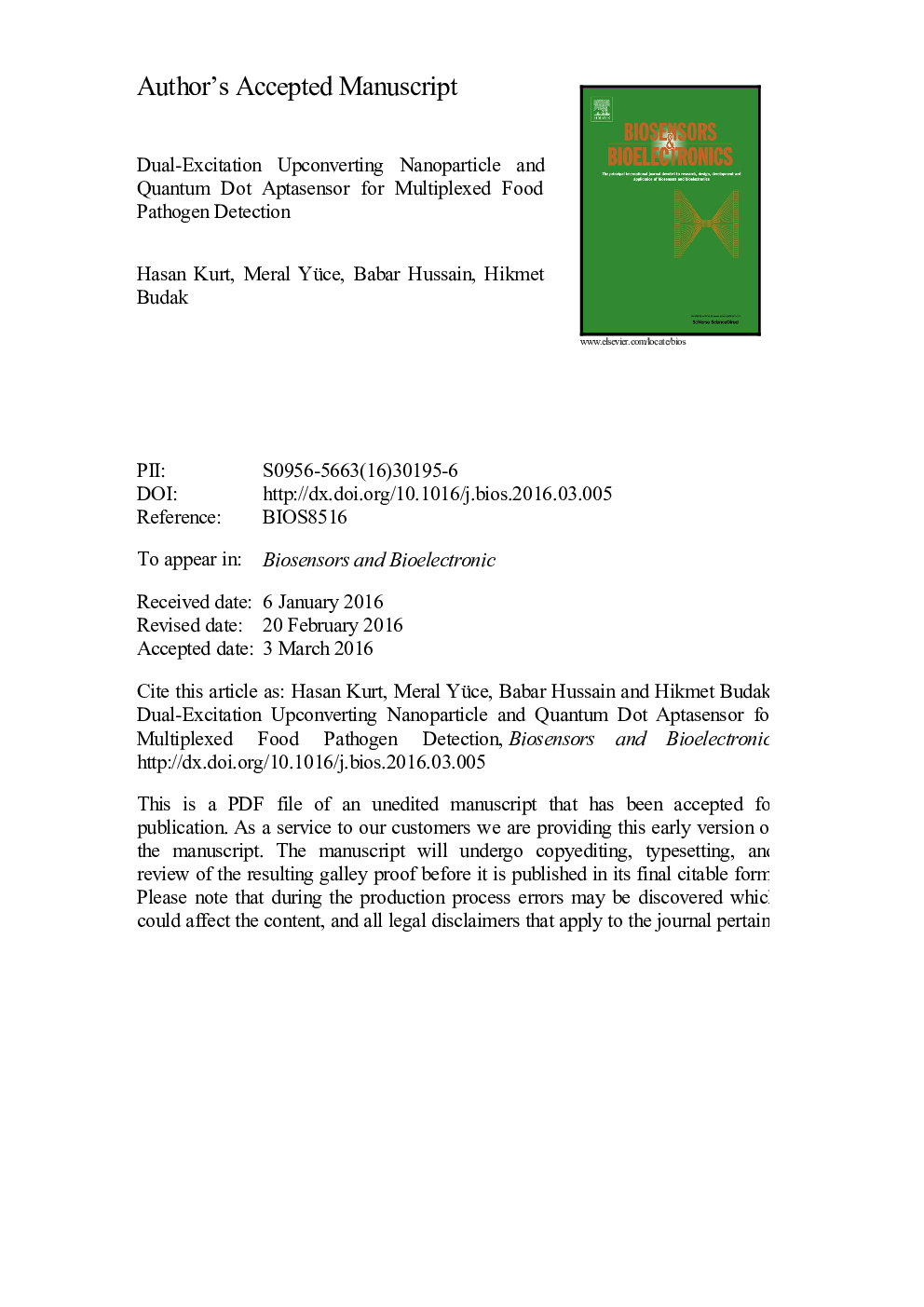| Article ID | Journal | Published Year | Pages | File Type |
|---|---|---|---|---|
| 7230582 | Biosensors and Bioelectronics | 2016 | 18 Pages |
Abstract
In this report, a dual-excitation sensing method was developed using aptamer-functionalized quantum dots and upconverting nanoparticles, exhibiting Stokes and anti-Stokes type excitation profiles, respectively. Conjugation of the aptamer-functionalized luminescent nanoparticles with the magnetic beads, comprising short DNA sequences that were partially complementary to the aptamer sequences, enabled facile separation of the analyte-free conjugates for fluorescent measurement. UV-Visible spectroscopy, Circular Dichroism spectroscopy, Dynamic Light Scattering and Polyacrylamide Gel Electrophoresis techniques were used to characterize the aptamer probes developed. The target-specific luminescent conjugates were applied for multiplex detection of model food pathogens, Salmonella typhimurium, and Staphylococcus aureus, in which the fluorescent emission spectra were obtained under UV excitation at 325 nm for quantum dots and NIR excitation at 980 nm for upconverting nanoparticles, respectively. The dual-excitation strategy was aimed to minimize cross-talk between the luminescent signals for multiplexed detection, and yielded limit of detection values of 16 and 28 cfu mLâ1 for Staphylococcus aureus, and Salmonella typhimurium, respectively. By employing a greater number of quantum dots and upconverting nanoparticles with non-overlapping fluorescent emissions, the proposed methodology might be exploited further to detect several analytes, simultaneously.
Related Topics
Physical Sciences and Engineering
Chemistry
Analytical Chemistry
Authors
Hasan Kurt, Meral Yüce, Babar Hussain, Hikmet Budak,
